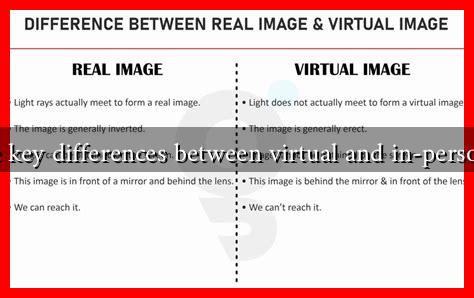-
Table of Contents
What are the Key Differences Between Virtual and In-Person Schooling?
In recent years, the landscape of education has undergone a significant transformation, particularly due to the COVID-19 pandemic. As schools were forced to adapt to remote learning, the debate between virtual and in-person schooling intensified. Each mode of education has its unique advantages and challenges, making it essential to understand their key differences. This article explores these differences, providing insights into the implications for students, parents, and educators.
Learning Environment
The learning environment is one of the most significant differences between virtual and in-person schooling. Each setting offers distinct experiences that can impact student engagement and learning outcomes.
- In-Person Schooling: Students attend classes in a physical classroom, allowing for direct interaction with teachers and peers.
. This environment fosters collaboration, socialization, and immediate feedback.
- Virtual Schooling: Students learn from home or other locations using digital platforms. While this offers flexibility, it can lead to feelings of isolation and reduced motivation due to the lack of face-to-face interaction.
Teaching Methods
The methods employed by educators can vary significantly between virtual and in-person settings. Understanding these differences can help parents and students choose the best educational path.
- In-Person Teaching: Traditional teaching methods often include lectures, group discussions, and hands-on activities. Teachers can easily gauge student understanding through body language and immediate responses.
- Virtual Teaching: Online education often relies on pre-recorded lectures, interactive quizzes, and discussion boards. While technology can enhance learning, it may also lead to distractions and disengagement.
Accessibility and Flexibility
Accessibility and flexibility are crucial factors that influence the choice between virtual and in-person schooling.
- In-Person Schooling: Students must adhere to a fixed schedule, which can be challenging for those with extracurricular commitments or family responsibilities. However, in-person schooling often provides access to resources like libraries, laboratories, and counseling services.
- Virtual Schooling: Online education offers greater flexibility, allowing students to learn at their own pace and on their own schedule. This can be particularly beneficial for students with unique learning needs or those who thrive in a non-traditional setting.
Social Interaction
Social interaction plays a vital role in a student’s development, and the differences between virtual and in-person schooling can significantly impact this aspect.
- In-Person Schooling: Students have ample opportunities to interact with peers, participate in group activities, and develop social skills. This interaction is crucial for emotional and social development.
- Virtual Schooling: While virtual platforms often include chat rooms and video calls, the lack of physical presence can hinder the development of strong social bonds. Students may miss out on essential experiences like team sports, school events, and casual interactions.
Performance and Outcomes
Research indicates that the mode of schooling can influence academic performance and overall outcomes.
- In-Person Schooling: Studies have shown that students in traditional classrooms often perform better academically due to structured environments and direct teacher support. For instance, a study by the National Bureau of Economic Research found that students in in-person settings had higher test scores compared to their virtual counterparts.
- Virtual Schooling: While some students thrive in online environments, others may struggle without the structure of a physical classroom. A report from the U.S. Department of Education indicated that online learning can lead to lower retention rates and higher dropout rates among high school students.
Conclusion
In summary, the key differences between virtual and in-person schooling encompass various aspects, including learning environments, teaching methods, accessibility, social interaction, and academic performance. Each mode of education has its unique advantages and challenges, making it essential for students and parents to consider their individual needs and circumstances when choosing an educational path. As the education landscape continues to evolve, understanding these differences will be crucial in making informed decisions that best support student success.
For more information on the impact of virtual versus in-person schooling, you can visit the U.S. Department of Education’s research page.





